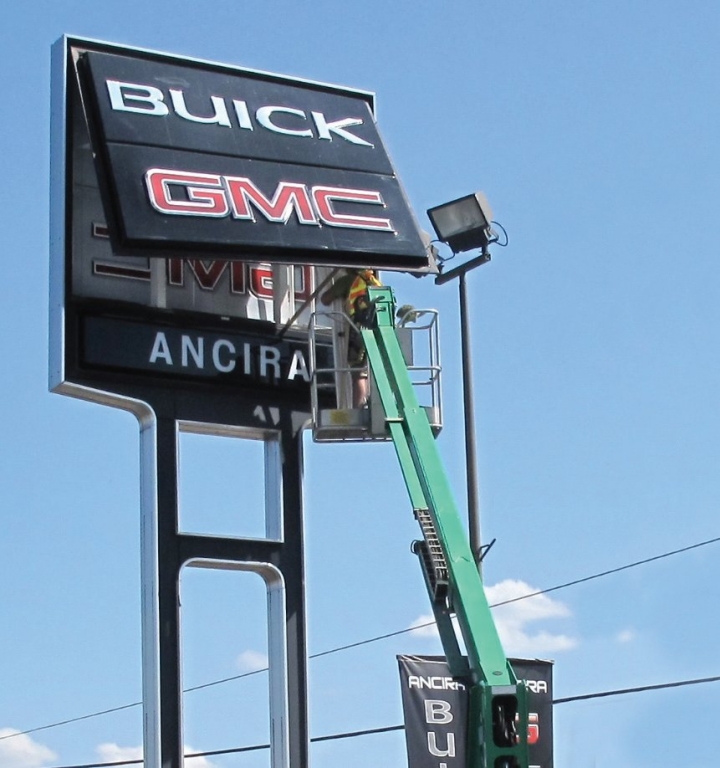Business Management
Bill Dundas Discusses Contractor-Licensing Policies’ Impact on Signmakers
New rules may impact job qualification
Published
8 years agoon

Have you had this experience? Your foreman calls from a jobsite to notify you that a local official has halted your project due to non-compliance with state licensing requirements you’ve never heard of, despite years of experience in the field. Unfortunately, this has become increasingly commonplace as certain states adopt new legislation substantially altering previous requirements for sign contractor licensing.
State licensing challenges
In 2013, Wisconsin was preparing to adopt legislative language that would have required any individual or firm performing routine sign or lighting maintenance work to be registered with the state as a licensed electrical contractor. Fortunately, engagement by a coalition including the International Sign Association (ISA), the Wisconsin Sign Association, property managers and other interested parties convinced authorities to revise this language. As a result, state requirements adopted in April 2014 preserved the longstanding ability of sign contractors and others to perform electrical maintenance work limited to signs and luminaires, while excluding other types of work normally performed by electrical contractors (e.g. branch circuit or electrical panel work).
Similarly, South Carolina adopted an unusual and troublesome licensing approach for sign contractors in January 2016. The state opted to require a separate license for each of two general operations (structural steel and concrete work) related to sign installation work, mandating licensing for sign companies under specialty classifications for projects exceeding $5,000.
According to James Carpentier, manager of state and local government affairs for the ISA, the impetus for these requirements stemmed from a building official’s inquiry to the state licensing board concerning which state licenses were required for a sign company to install a freestanding sign. This led the state to determine that licensing was required in both the concrete and structural-steel categories. However, “the state has never provided any evidence that these sign failures are related to issues which might indicate a need for stricter regulation,” said Carpentier. “… In fact, one of our members faced a situation where he was compelled to hire a general contractor to obtain a permit for his sign project.”
In connection with ISA’s efforts to address this issue, industry advocates suggested the state create a separate specialty licensing category for sign contractors, but state authorities rejected this approach. (ISA is currently seeking an exemption for sign companies from the state’s revised licensing rules, but the prospects for success in this effort remain uncertain.)
Neighboring North Carolina follows the conventional approach of licensing sign contractors as a separate specialty. But the state’s regulatory language was drafted in a manner that, in effect, excludes sign companies from replacing ballasts in lighting fixtures (luminaires). Consequently, a sign company would not be allowed to complete a lighting-maintenance project because ballast replacements are typically a necessary aspect of this work.
Similar situations occasionally arise elsewhere in the U.S., sometimes reflecting lack of coordination
between different governmental agencies. For example, Jim Rahe operates Pittsburgh, PA-based JTB Sign Service, a company with more than 30 years’ experience as a licensed electric-sign contractor. Rahe also holds a state contractors’ license in nearby West Virginia, where his firm has completed numerous sign installations in past years. But in 2015, his installation crew was ordered off of a jobsite by the state fire marshal because his employees are not registered electricians.
When Rahe inquired about this issue at the state’s contractor licensing board, they assured him that his company is a duly-licensed contractor in good standing. But as a result of this incident, Rahe had to inform his customer that he would not be able to complete their project. Furthermore, his company no longer accepts any work in West Virginia.
“After you’ve worked at your trade for 30 years and operated legally in a state, suddenly they say you’re no longer qualified,” he said. “I think this also is having a big impact on many other sign companies, including many in West Virginia.”
Qualifications matter
In these cases, and possibly in others, efforts to rewrite contractor licensing requirements sometimes conflict with states’ legitimate goal of advancing professionalism among state contractors. First and foremost, such approaches fail to recognize the substantial experience and expertise of sign companies in their chosen trade. Additionally, by imposing new requirements which prohibit (at least temporarily) qualified companies from performing sign installations or maintenance, situations arise which not only delay scheduled construction projects in certain jurisdictions, but also have potential, adverse impacts on worker safety.
Because electric signs are highly specialized devices, it’s crucial for installers and service technicians to be familiar with the procedures necessary for their safe handling and service access. For example, many outdoor signs incorporate very large face panels which may be hinged (Fig. 1) or, in other cases, may slide open for accessing internal lighting components. Some signs also may be accessed via trap doors, thus requiring servicepersons to work entirely inside of sign cabinets.
These examples represent only a few of many potential hazards sign work entails and to which inexperienced workers may unwittingly be exposed. For this reason, invoking new rules that effectively disqualify a substantial number of experienced sign contractors (either temporarily or permanently) may actually create a situation opposite to the intent of contractor licensing. Additionally, when sign contractors are barred from performing routine lighting- maintenance work, this not only results in lost business for the sign industry, but also leads to significantly higher costs for businesses that need to maintain outdoor lighting.
In this vein, sign professionals know that many electrical contractors do not own or use bucket trucks and other high-reach equipment in their daily work. Instead, businesses such as automobile dealers call on their local sign contractors to provide maintenance on pole- and building-mounted light fixtures. These services are often performed in connection with sign-maintenance work.
In view of the potential problems associated with changes in contractor-licensing rules, it seems reasonable for authorities mandating these changes to facilitate licensing of existing, electric-sign contractors. Unfortunately, new regulations are sometimes imposed arbitrarily and without establishing simple procedures for licensing of existing sign contractors based on their experience and abilities.
Thus, if a sign company suddenly is required to obtain licenses in other contractor specialties, this requires the person taking the qualifying test(s) to also be knowledgeable in trades differing substantially from sign work. For example, certification as a structural steel or concrete contractor might entail knowledge of requirements for operations such as road paving, building erection and foundation work.
This represents a key reason why many states have opted to create separate specialty licensing categories for sign contractors that are strictly limited to the operations typically performed in this trade. In this manner, these state authorities recognize that the capabilities necessary for performing sign projects differ significantly, both in nature and extent, from those necessary in general contracting operations.

SPONSORED VIDEO
Introducing the Sign Industry Podcast
The Sign Industry Podcast is a platform for every sign person out there — from the old-timers who bent neon and hand-lettered boats to those venturing into new technologies — we want to get their stories out for everyone to hear. Come join us and listen to stories, learn tricks or techniques, and get insights of what’s to come. We are the world’s second oldest profession. The folks who started the world’s oldest profession needed a sign.
You may like

Summa Releases GoProduce Flatbed Edition 3.0

Preserving the Past with The San Jose Sign Project – Part 1

Who’s Steering Signs of the Times?
Subscribe

Bulletins
Get the most important news and business ideas from Signs of the Times magazine's news bulletin.
Most Popular
-

 Business Management1 week ago
Business Management1 week agoWhen Should Sign Companies Hire Salespeople or Fire Customers?
-

 Women in Signs1 week ago
Women in Signs1 week ago2024 Women in Signs Award Winners Excel in Diverse Roles
-

 True Tales2 weeks ago
True Tales2 weeks agoSign Company Asked to Train Outside Installers
-

 News2 weeks ago
News2 weeks agoAvery Dennison Wrap Like Royalty Challenge Now Open
-

 Editor's Note5 days ago
Editor's Note5 days agoWhy We Still Need the Women in Signs Award
-

 Maggie Harlow2 weeks ago
Maggie Harlow2 weeks agoThe Surprising Value Complaints Bring to Your Sign Company
-

 Line Time1 week ago
Line Time1 week agoOne Less Thing to Do for Sign Customers
-

 Product Buying + Technology6 days ago
Product Buying + Technology6 days agoADA Signs and More Uses for Engraving Machines










